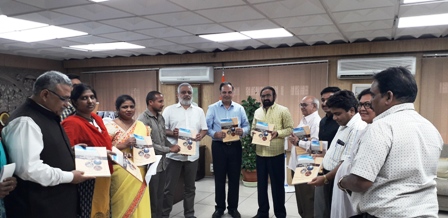The Bhuj, Gujarat Earthquake in 2001 and the Indian Ocean Tsunami – 2004, changed the scenario of Disaster Management in India. The Government of India evolved Disaster Management Act -2005 and Disaster Management Policy -2009 to guide all stakeholders to move from relief centric approach to preparedness and Mitigation actions. The effort is also strengthened by global documents – Sendai Framework for Disaster Risk Reduction (201502030) and Sustainable Development Goals.
Telangana State is exposed to natural hazards such as Droughts, Heatwaves, Urban Flooding and Hailstorms and human induced hazards such as Industrial and Fire Accidents. Based on DM Act-2005 and national guidelines, the State decides to prepare the Telangana State Disaster Management Plan 2018. The document provides general information on Disaster profile of Telangana, Hazard Risk Vulnerability Analysis of the State to various hazards and programs initiated to reduce risk, Hazard specific action plan and mitigation measures to Urban / Flash Floods, Thunderstorms, Heatwaves, Drought, and Human induced disasters such as Industrial, Chemical, Biological, etc.
The State Disaster Management Plan provides for overall direction, while setting out the States’ goals. The document will be a ready reckoner for key departments and especially for the officials at the State and District levels to work effectively and are aware of positive actions to be taken for any hazardous events. The document provides specific guidelines on disaster management plans, including response plans and necessary Standard Operating Procedures. In the area of capacity development, efforts are being started and in progress to mainstream Disaster Risk Reduction (DRR) and Climate Change Adaptation (CCA) into development plans
That Over the time, various institutional mechanisms will created and the process of strengthening Institutional mechanisms and capacities are being started and are in progress. The State will be holding series of capacity building programs to strengthen State Disaster Management Authorities (SDMAs) and District Disaster Management Authority (DDMAs).
The present document is dynamic in nature and will be open to feedback and inputs to constantly improve the efforts of the Government towards resilience building. The State appreciates the efforts of all the stakeholders (Revenue –Disaster Management, Dr. MCRHRD Institute, Hyderabad and UNICEF India, Hyderabad) in this process. The TS-SDMP is based on Sendai Framework for Disaster Risk Reduction 2015 and Child Centric approach to address risk reductionand towards a planned Build Back Better (BBB) programme.




















